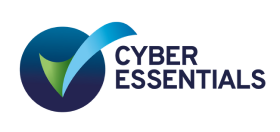This article is for project managers or sponsors working on large web projects for complex organisations.
Things this article covers:
- Stakeholder engagement
- Applying for and agreeing a CapEx budget
- Picking suppliers
- Avoiding decision by committee
- Delivering a smooth go-live
At Quba we have had the pleasure of working with a number of large organisations who either have business units which act largely autonomously or have completely different brands. This throws up a lot of challenges on the client side and this article is our guide on how to run your project efficiently and ultimately deliver a successful outcome.
Stakeholder Engagement
Do not underestimate the scale of this task. In organisations where individual departments or brands are relatively silo’d the task of gathering requirements from the business can be both painful and drawn out. "A little knowledge is a dangerous thing" as the saying goes. You will probably have stakeholders with varying levels of digital/web experience and there is a risk that those with 'some' experience can overpower the opinions without. It's easier in the early stages as you draw out requirements and expand upon the possibilities. However, later on when you have to make tough decisions around prioritisation and compromise it is crucial that expectations were managed early on to make this process easier on everybody.
One thing you might consider is to bring in either an agency or a consultant to help engage the business behind the group project. An external third party can help to bring an objective and dispassionate structure to the process of gathering requirements. On a recent project with a UK medical school we took this role and in many ways the most important reason for us being there was to give the Project Manager the ability to manage the project rather than being drawn into conversations about detail. Facilitation of web project planning is difficult. If you do decide to go on your own consider if you should appoint anybody to work alongside you. This will help to ensure that you get what you need from internal meetings and that they do not get thrown off track by conversations which are interesting but not relevant to the task you are trying to complete.
Applying for a Cap Ex budget
One of the falsehoods about a Capital Expenditure project is that everyone involved has an equal stake. This is never the case as the stakeholders who generate the most revenue contribute the most to the budget and will expect to have a strong influence.
Our advice is that if you are applying for a CapEx budget you should ‘buddy up’ with someone who sympathises with your vision. Where we have seen clients do this the result is normally the same. They come out of the budget planning meeting having kept the stakeholders in check and with an adequate budget. Going in completely alone is dangerous. We had a client a few years ago who went in to ask for a £150,000 budget and was told that she had to deliver what the business had signed up to for £45,000. This was in no way enough budget and the reality was that a lot of what she wanted to achieve in Phase 1 was delayed until future phases. The project became so focussed on hitting budget that functionality and ‘the big idea’ were largely lost. The result was bad for everyone.
Picking Suppliers
Ultimately as PM on a group project the working relationship needs to work for you, the software needs to support you and you need to trust that what is being promised is what will be delivered. Although it is important to allow project steering groups / stakeholders to be part of the decision making process you should be looking out for what you want at all times.
Top of the list for many people when shortlisting and picking suppliers is:
- Do they have the sector experience?
- Do they have the technical experience?
- Do they have the team I want to work with?
- Do their customers advocate the things they say?
- Does this supplier minimise risk of the project failing?
- Can this supplier add value above and beyond what I can bring to the table?
These are all great ways of judging potential suppliers. My recommendation to anybody looking at either digital agencies or software providers is to dig as deep as you can. We are experts in creating online marketing messages which work - so push round the edges, meet with us face to face and ask challenging questions. We prefer it when clients do this as it shows whether there is a genuine fit there.
Avoiding Decision by Committee
Never forget that the success and failure of your project is on your head. As much as stakeholders can provide interesting insights that improve the depth of the final deliverable they must not be allowed to dictate a compromise which works for your organisation but not your users. Having been through a number of these projects our recommendation would be to involve stakeholders at three key points in a traditional linear project (obviously this is much different in an Agile project where stakeholders actually form the project team and those that aren't have empowered a dedicated project sponsor to make decisions and prioritise).:
- Project Initiation: We run a series of workshops which extracts useful information about the day to day factors of their business area which need to be reflected in your online marketing and website. We normally run these workshops on a team by team basis. This avoids conflicting views and allows people to speak freely without feeling the need to hold back. A great example of this is the different views that can exist between sales, customer services and marketing teams. They all have their own take on how the business could be improved and ultimately these issues may need to be resolved internally before a cohesive proposition for the business can be demonstrated to your end users.
- Prototype Sign Off: You may also choose to bring key stakeholders into the sign off of finished designs with brand, but this is can be a minefield with varying aethetic opinions distracting from the important choices around nomenclature, layout and user journeys.You may want to do this internally but if you have the right partner onboard a better idea might be to invite your agency to help you to sell in the vision you have agreed.
- Final Testing and Go Live: The more people who can interrogate the working website before it goes over to your end users the better. Not only will it iron out any last teething issues it will also bring the stakeholders back into the project. This means that if there are any issues post go live you should have supporters internally rather than a pack of wolves ready to rip you to pieces!
Delivering a smooth go live
One of the area that is regularly forgotten in a large web project is that there will inevitably be changes to onsite content. As far as possible it is your job to avoid becoming the main website content administrator. Keeping your head above water and ensuring that staff are completing their work on time and accurately without getting drawn in is the much better approach.
If you have lots of content to administer a consideration might be to appoint either an internal or external CMS expert to manage the nitty gritty of getting things live. At Quba our Platform Specialist Chris Bainbridge does this for many of our clients by sitting in their office as a physical member of their team for a few days or weeks ahead of the big push.
About the Author:
Matthew Williams is Managing Director at Quba and one of the founding partners of the business. He has overseen the digital evolution of many of our largest clients and regularly meets with new clients to discuss what they are trying to achieve.
Get more of this by subscribing to our regular newsletter





